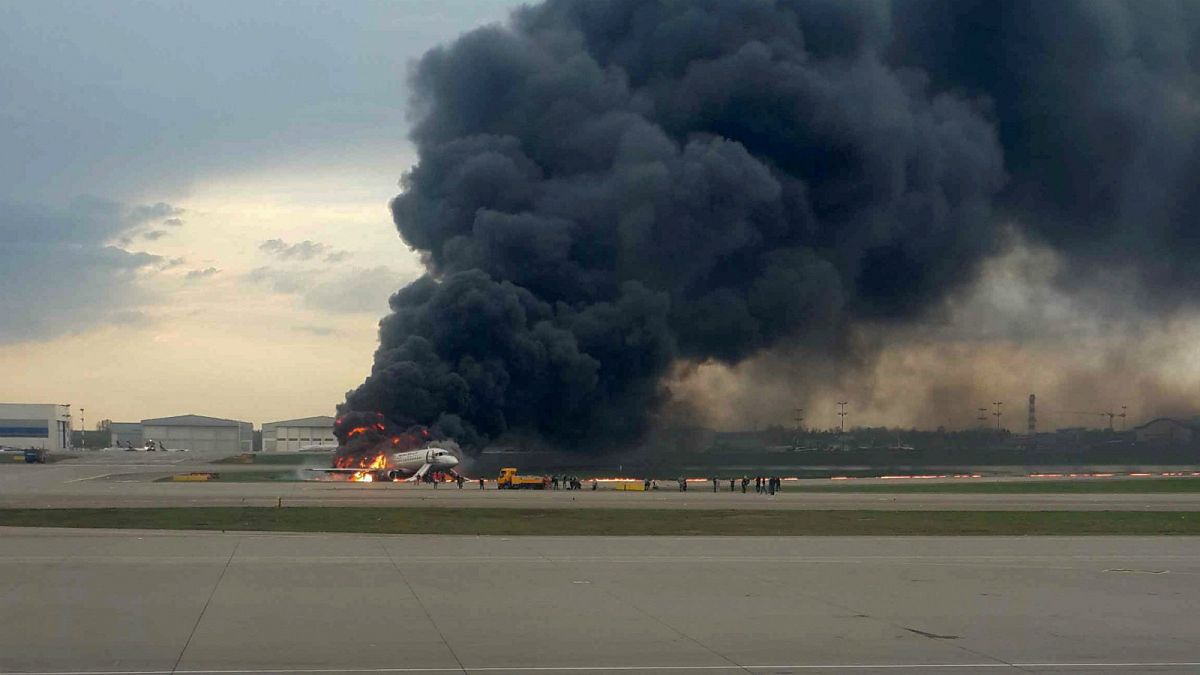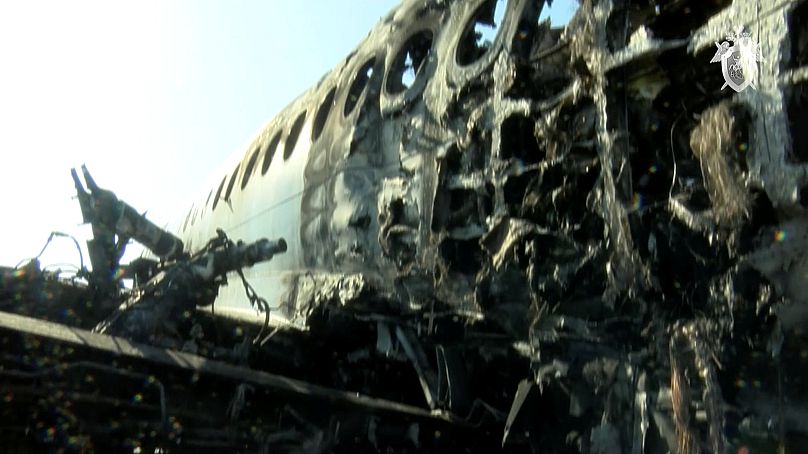What do we know about Aeroflot flight SU1492 that was engulfed in flames in Moscow?
A Russian Aeroflot flight caught fire as it conducted an emergency landing in Moscow on Sunday evening, killing dozens of people.
But what exactly do we know about aircraft, the passengers and how the events unfolded?
Timeline of events
The Aeroflot flight SU1492 departed from Moscow's Sheremetyevo International Airport on 18:03 local time, and was en route for Murmansk.
But just over 20 minutes into its 2.5-hour flight time, a radio failure was declared, which developed into an emergency, and prompted the captain to request to return.
As the aircraft came in to land, video footage showed the plane bouncing on the runway, before its tailend burst into flames.
The burning plane eventually came to a halt, and passengers were witnessed fleeing from the wreckage via emergency slides.
What do we know about the passengers?
There were 78 people in total aboard the flight, 41 of which have died.
Russia's health ministry confirmed in a post to Vkontakte on Monday morning that nine people had been taken to hospital for treatment, and three were in a "serious condition".
An "incomplete" list of the names of the survivors was posted to the Aeroflot website, which sent condolences to the families of the deceased.
"The crew did everything in its power to save passenger lives and provide emergency assistance to those involved," it said in a statement.
"Tragically, they were unable to save all those aboard."
A government employee in the city of Murmansk and a US citizen are reported to be among the dead.
According to a law enforcement official quoted by TASS news agency, the majority of those killed in the incident were believed to have died from poisoning or suffocation from "the products of combustion".
One woman transported to hospital with serious injuries was being treated for smoke inhalation and burns covering 15% of her body, a doctor told Russian media.
Bodies of the dead have been transported to a morgue, and the process of formal identification is due to begin immediately.
What caused the incident?
The plane initially declared a radio failure just minutes after taking off from Moscow, but reasons beyond this are not clear.
Aeroflot said a "technical error" forced the plane to land, where the engine caught fire.
Much speculation about the technical failure and subsequent fire has been made in hours after the incident, but nothing can be confirmed until an investigation has been completed.
Russia's Investigative Committee said it had opened a criminal investigation into the case, listing its avenues to address.
“The investigation considers various versions of the incident, among which are insufficient qualifications of pilots, dispatchers and persons who conducted technical inspection of the board; aircraft malfunction; adverse weather conditions.”
The black box data recorders have been retrieved from the aircraft, along with other pieces of evidence for further investigation.
Several people on social media noted a lack of fire engines seen rushing to the scene in eyewitness videos filmed in the immediate aftermath of the incident.
But according to aviation expert Jason Rabinowitz this is nothing untoward.
"The aircraft didn't ignite until it was in the process of landing so I'm not surprised [the aircraft rescue and firefighting team] was not present," he told Euronews via email.
"They'd only be present if the flight crew requested it or if air traffic control as reason to put them in place."
What do we know about the plane?
The aircraft involved in Sunday's incident, a Sukhoi Superjet-100, is relatively new, having made its first flight in 2017.
The jets were first revealed at the Paris Airshow in 2009 as a hopeful comeback bid for Russian aviation in the international market.
Three years later, in 2012, the Superjet-100 received its European Aviation Safety Agency (EASA) Type Certificate.
But despite its brief history, there have been several reported incidents involving the aircraft.
In 2012, dozens of people were killed after a Superjet-100 crashed into a mountain in Indonesia during a demonstration flight, which was later blamed on pilot error and air traffic control systems.
An engine failure in 2013 led to the failed takeoff of one of the planes, just weeks after Aeroflot were forced to ground ten of its Superjet fleet due to technical issues.
By 2016, the entire fleet was grounded by Russia's aviation authority over worries of "metal fatigue", something expected in older aircraft, but not of those less than a decade old.


